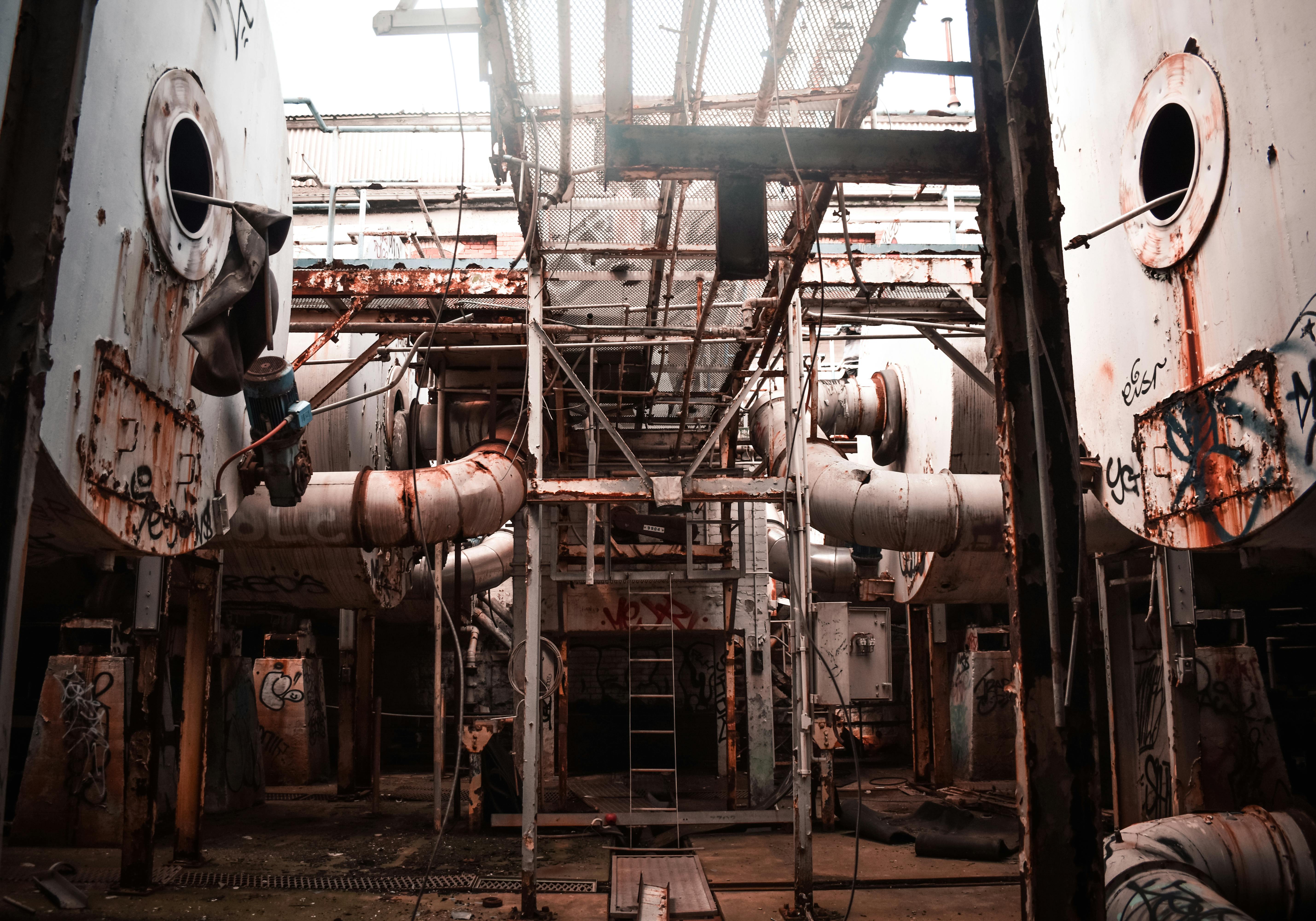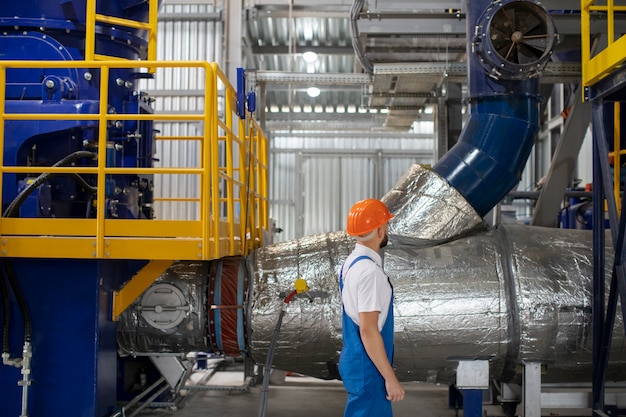Mastering Industrial Steam Boilers: A Comprehensive Guide
Industrial steam boilers are crucial components in various industries, providing a reliable and efficient source of heat or power. They play a vital role in processes such as power generation, heating, and industrial production. Understanding the fundamentals of industrial steam boilers is essential for optimizing their performance and ensuring safety in industrial settings.
History and Evolution of Steam Boilers
The concept of harnessing steam power dates back to ancient civilizations, but it wasn't until the 17th century that practical steam engines were developed. The invention of the steam engine by James Watt in the 18th century revolutionized industries such as transportation and manufacturing. This laid the foundation for the development of steam boilers as a means of generating steam for various applications.

Types of Industrial Steam Boilers
Fire Tube Boilers
Fire tube boilers are among the oldest and most commonly used types of industrial steam boilers. They consist of a cylindrical shell containing tubes through which hot gases produced by combustion pass. Water surrounds these tubes, absorbing heat from the gases to generate steam. Fire tube boilers are known for their simplicity, compact design, and ease of maintenance. They are suitable for small to medium-scale industrial applications where rapid steam production is required.
Water Tube Boilers
Water tube boilers are another prevalent type of industrial steam boilers, especially in large-scale operations. Unlike fire tube boilers, water tube boilers have water-filled tubes that circulate through a boiler, surrounded by hot combustion gases. This design allows for higher steam production rates and operating pressures, making water tube boilers suitable for high-demand industrial processes such as power generation and large-scale manufacturing.
Package Boilers
Package boilers are pre-engineered industrial steam boilers that come fully assembled and ready for installation at the job site. They are compact and self-contained units designed to provide steam for various applications with minimal on-site assembly and installation time. Package boilers are popular in industries where space is limited, and rapid deployment of steam generation capacity is required.
Electric Boilers
Electric boilers utilize electricity as the primary source of energy to generate steam. They are often used in applications where access to other fuel sources, such as natural gas or oil, is limited or impractical. Electric boilers are known for their cleanliness, ease of installation, and precise control over steam production. They are commonly found in industries such as food processing, laboratories, and healthcare facilities.
Components of Industrial Steam Boilers
Industrial steam boilers consist of several key components that work together to generate and distribute steam for various industrial processes.
- Boiler Shell: The boiler shell is the outer casing that encloses the boiler's internal components and contains the water and steam.
- Water Tubes: Water tubes run through the boiler shell and carry water, which is heated to produce steam.
- Furnace: The furnace is where the fuel, whether it's coal, natural gas, or oil, is burned to generate heat. The heat produced by the furnace is transferred to the water tubes to create steam.
- Burners: Burners are responsible for combusting the fuel and producing the heat needed to generate steam. They come in various designs depending on the type of fuel used.
- Superheater: The superheater is a section of the boiler that further heats the steam to increase its temperature and energy content. This superheated steam is then used in industrial processes that require high temperatures.
- Economizer: The economizer is a heat exchanger that preheats the feedwater using the heat from the flue gases before it enters the boiler. This improves boiler efficiency by reducing fuel consumption.
- Steam Drum: The steam drum is a large cylindrical vessel where the generated steam is collected before being distributed to the various parts of the industrial process.
- Feedwater Pump: The feedwater pump is responsible for pumping water from the feedwater tank into the boiler to replenish the water lost during steam generation.
- Safety Valves: Safety valves are installed on the boiler to release excess steam pressure and prevent the boiler from overpressurizing, ensuring the safety of the boiler and its operators.
- Control System: The control system regulates the operation of the boiler, including fuel delivery, steam production, and pressure control, to ensure efficient and safe operation.

Working Principle of Industrial Steam Boilers
Industrial steam boilers operate on a simple yet efficient principle: the conversion of water into steam through the application of heat. The process begins with the fuel, whether it's coal, natural gas, or oil, being fed into the furnace of the boiler. The fuel is ignited, generating heat that is transferred to the water-filled tubes running through the boiler shell. As the water absorbs heat, it reaches its boiling point and begins to vaporize, forming steam bubbles within the water tubes.
These steam bubbles rise to the surface of the water and enter the steam drum, where they accumulate to form saturated steam. The saturated steam is then piped out of the boiler and directed to various industrial processes that require heat or mechanical power.
Applications of Industrial Steam Boilers
Industrial steam boilers find wide-ranging applications across various industries due to their versatility, reliability, and efficiency. Some common applications include:
Power Generation:
Steam turbines driven by industrial steam boilers are used to generate electricity in power plants. The steam produced by the boilers is used to rotate the turbine blades, converting thermal energy into mechanical energy, which is then converted into electrical energy.
Heating:
Industrial steam boilers are used for heating large buildings, such as hospitals, schools, and hotels, as well as industrial facilities and warehouses. The steam produced by the boilers is distributed through pipes to heat exchangers, radiators, or underfloor heating systems, providing warmth and comfort in cold climates.
Food Processing:
In the food and beverage industry, industrial steam boilers are used for various processes such as cooking, sterilization, and drying. Steam is used to heat ovens, sterilize equipment, and evaporate moisture from food products during processing and packaging.
Chemical Processing:
Industrial steam boilers play a crucial role in chemical processing plants for tasks such as reactor heating, distillation, and sterilization. Steam is used to heat and maintain the temperature of chemical reactions, separate components through distillation, and sterilize equipment and containers.
Textile Industry:
In textile manufacturing, industrial steam boilers are used for tasks such as fabric dyeing, drying, and pressing. Steam is used to heat dye baths, dry fabric after washing, and provide the necessary pressure for pressing and finishing operations.
Pharmaceutical Industry:
Industrial steam boilers are used in pharmaceutical manufacturing for processes such as sterilization, drying, and formulation. Steam is used to sterilize equipment and containers, dry granules and powders, and provide clean, dry air for production areas.
Suite 1/01,10 Ferntree Pl, Notting Hill VIC 3168, Australia
Phone:613-8560-0419

